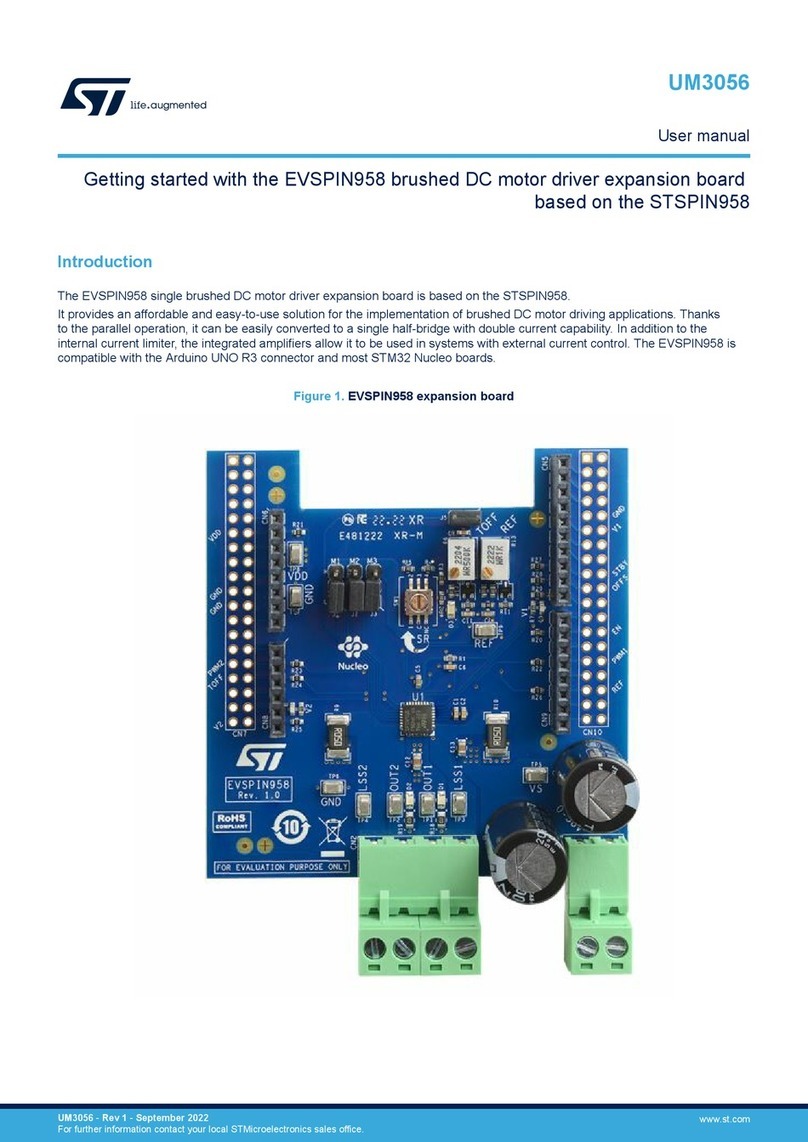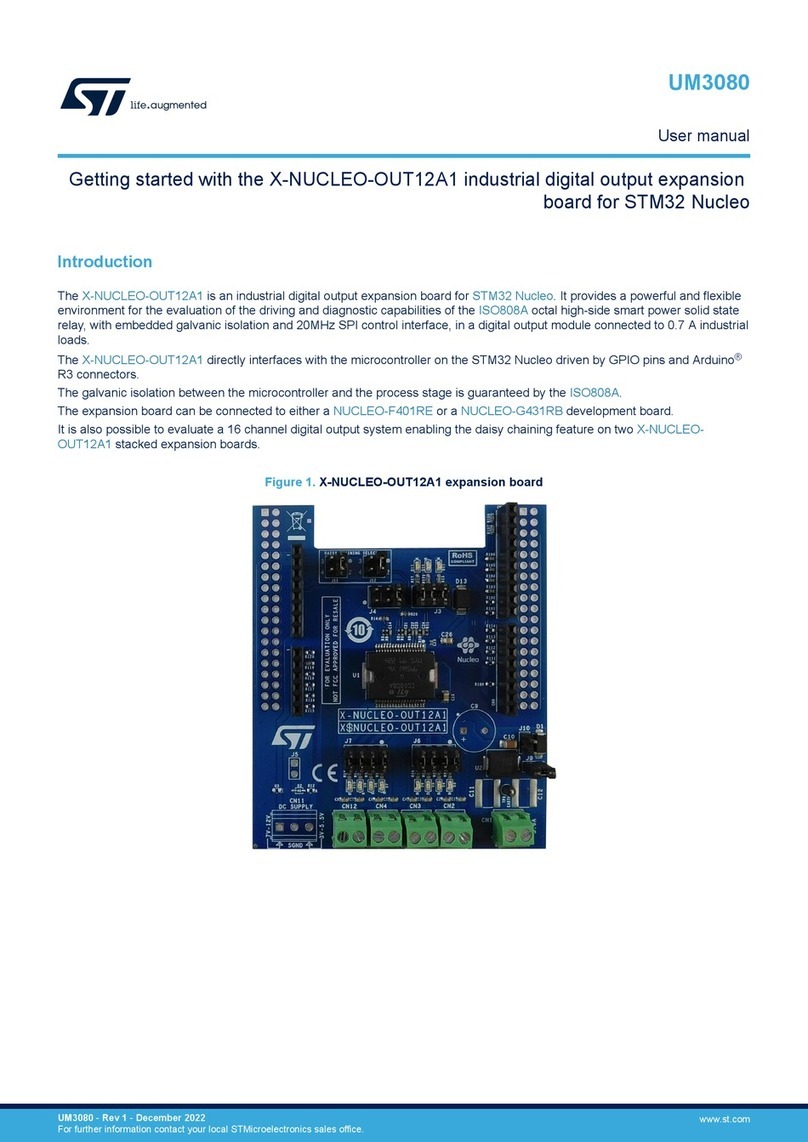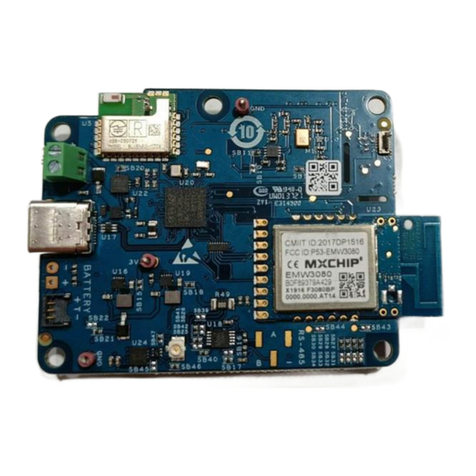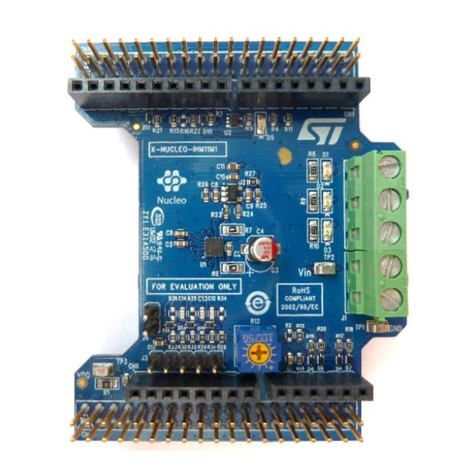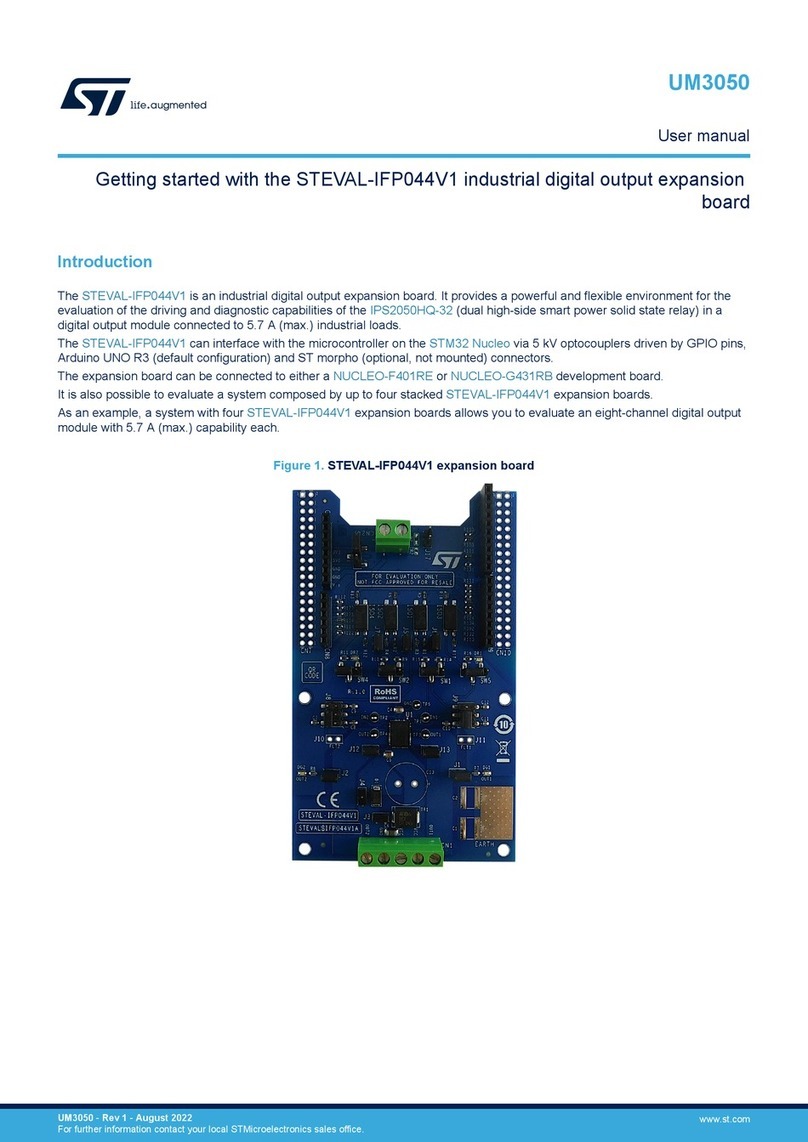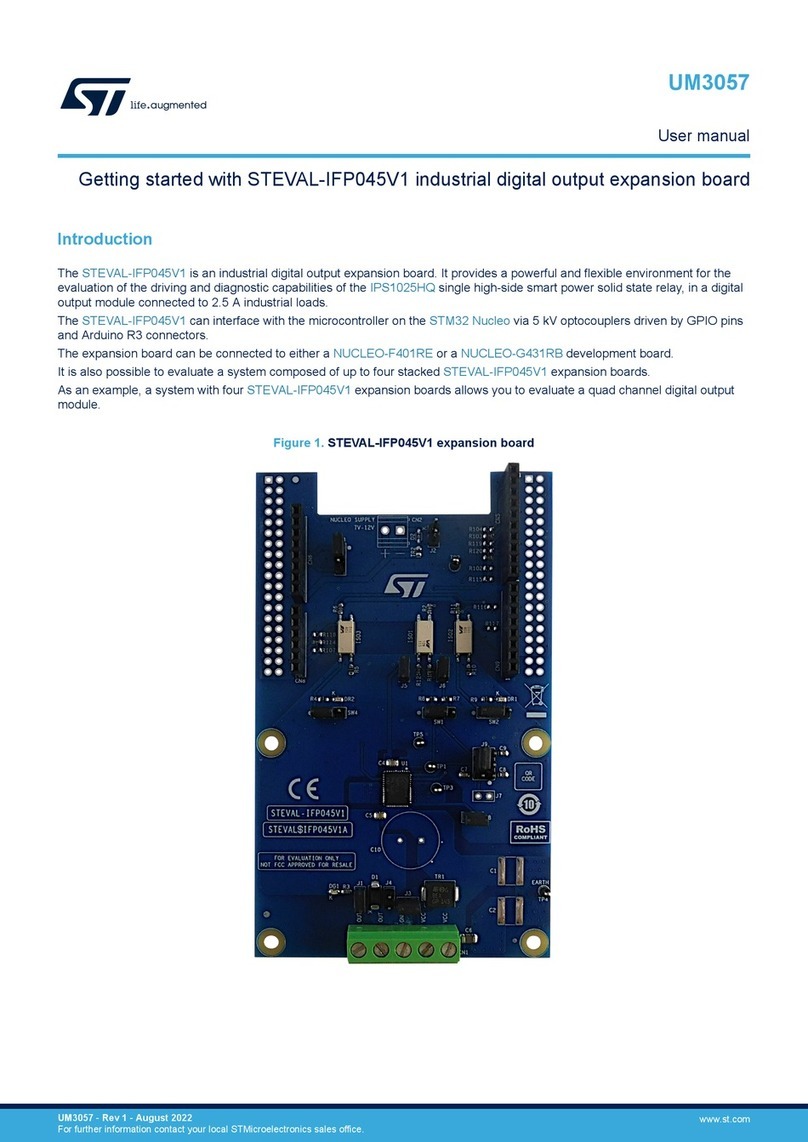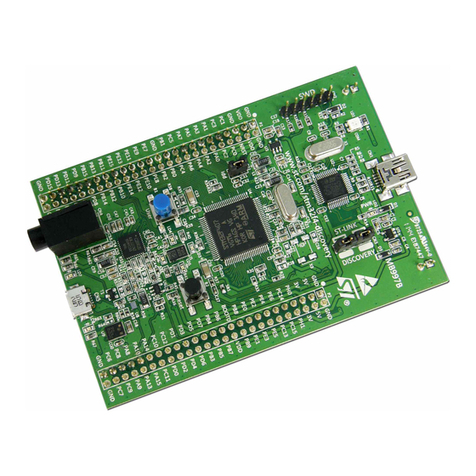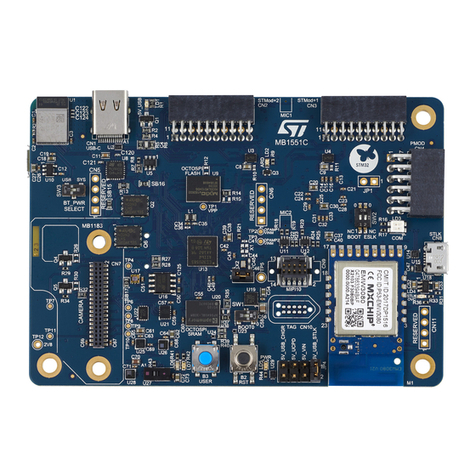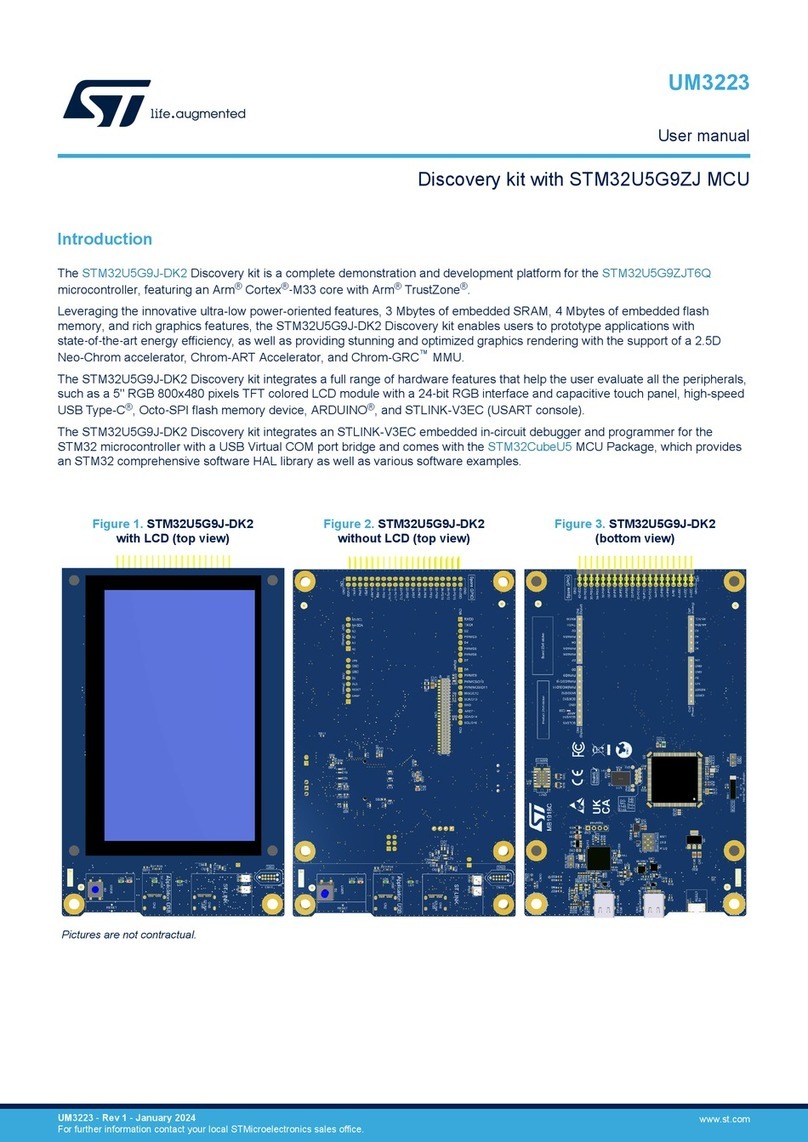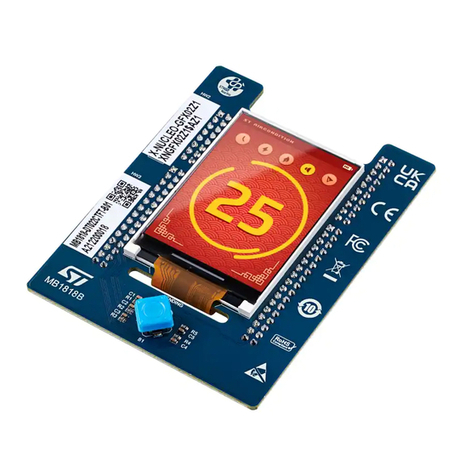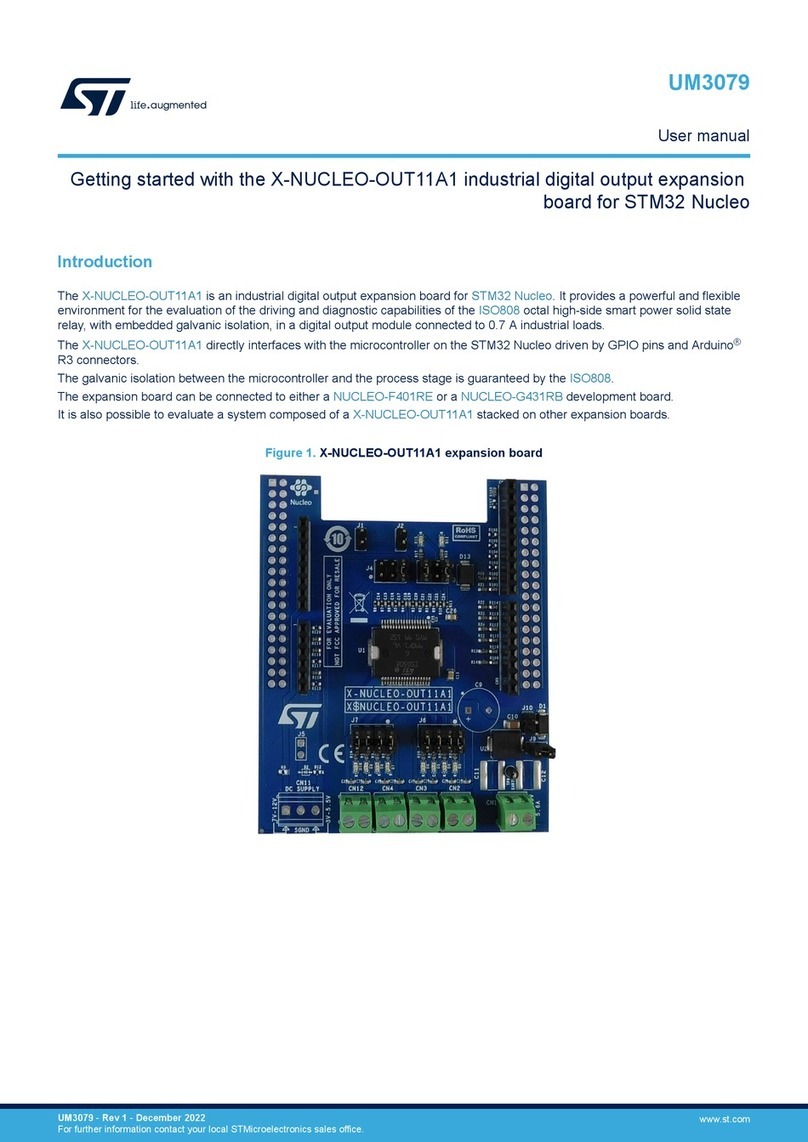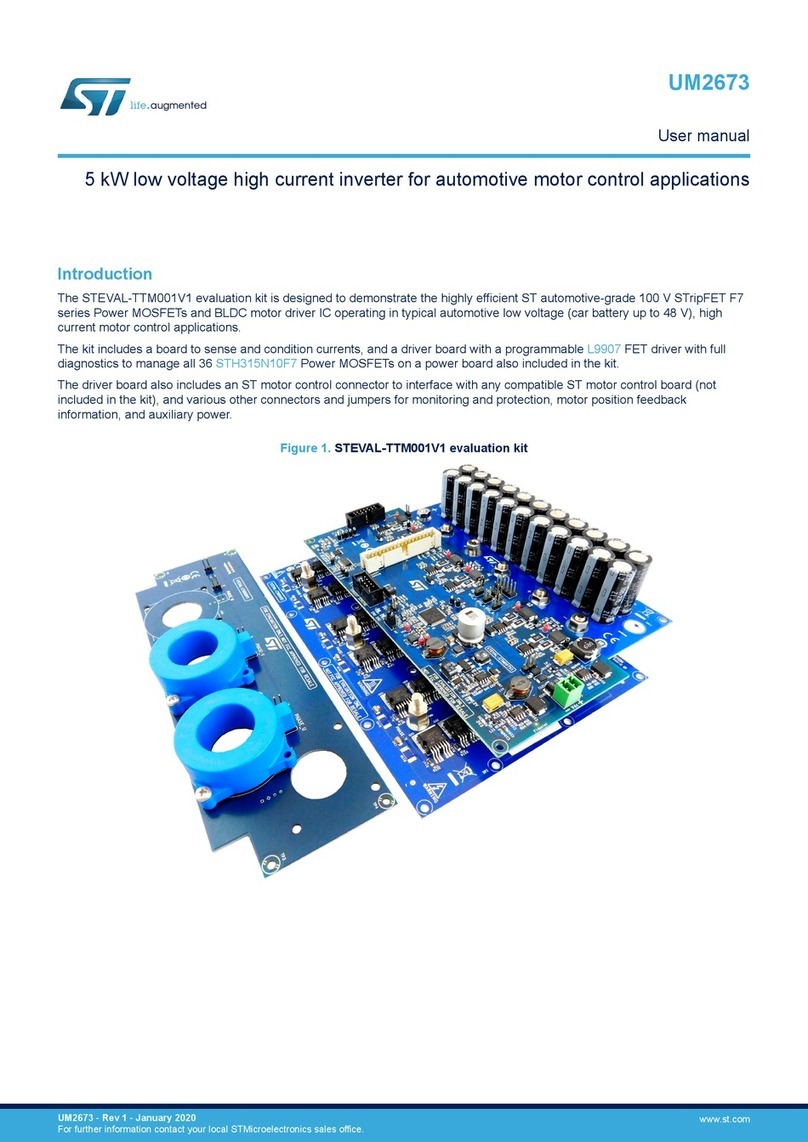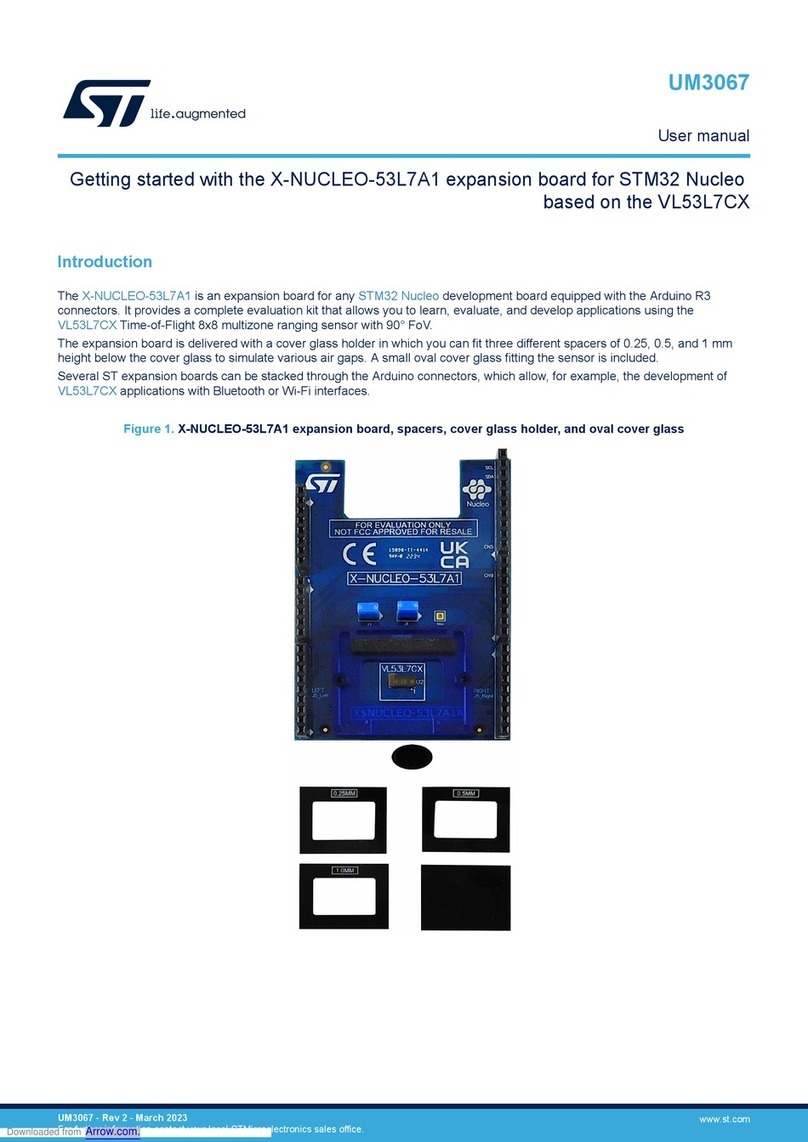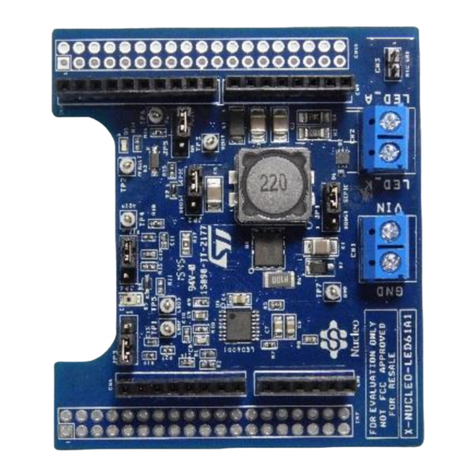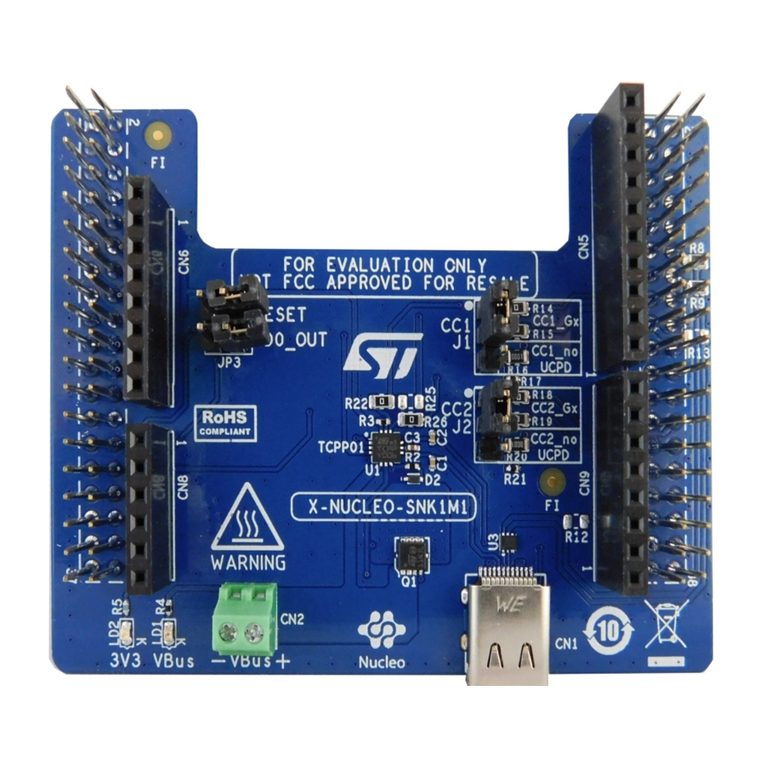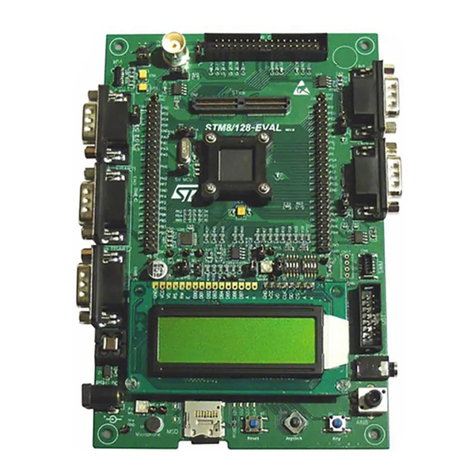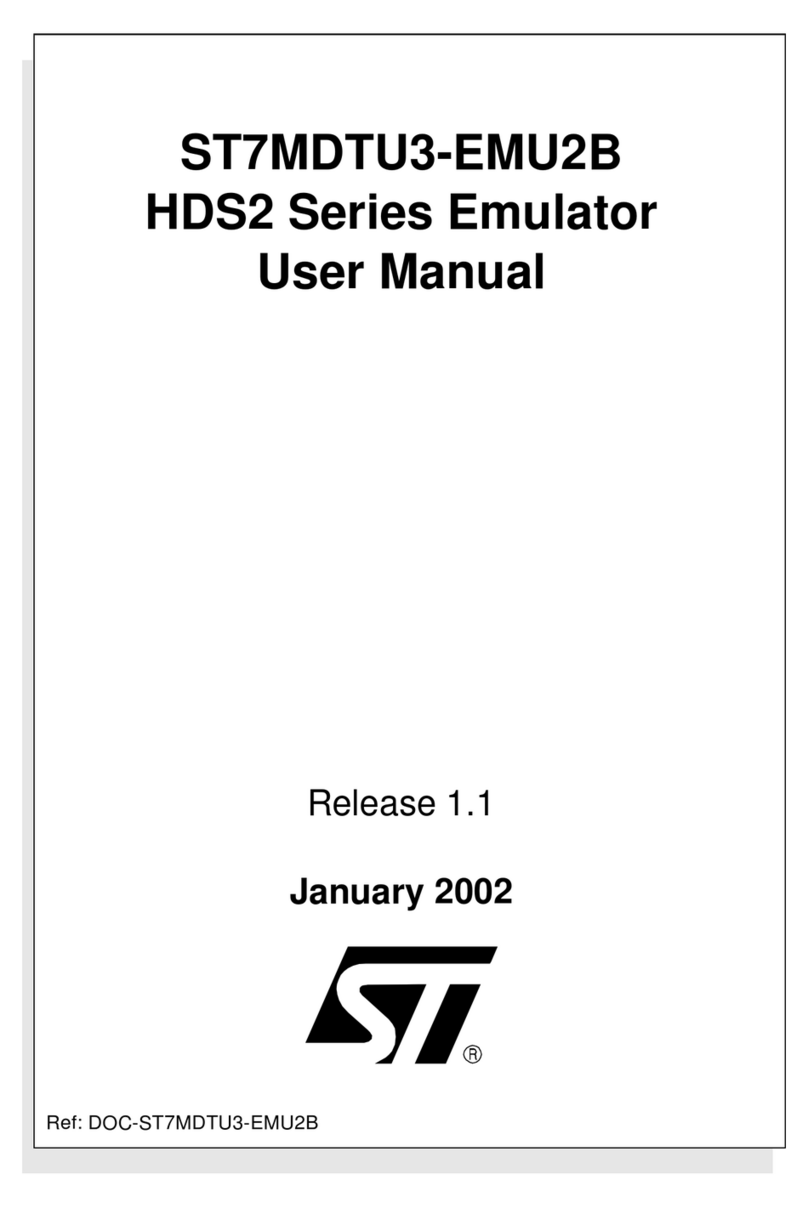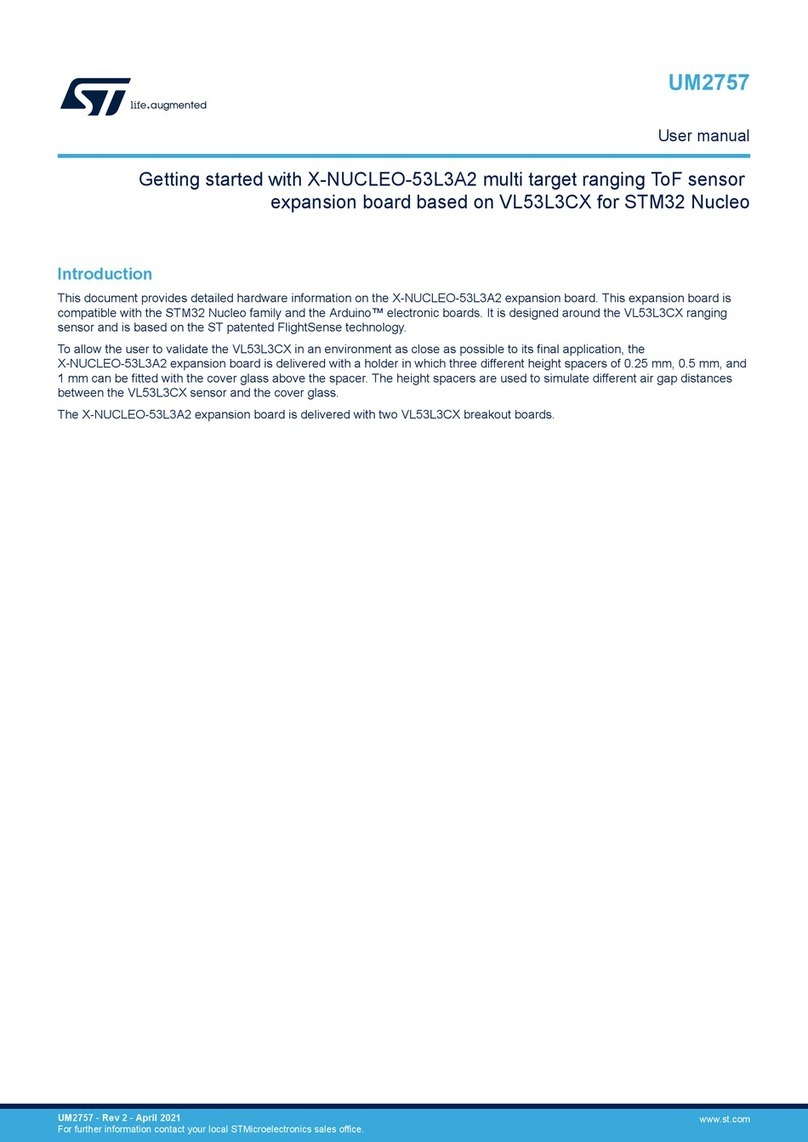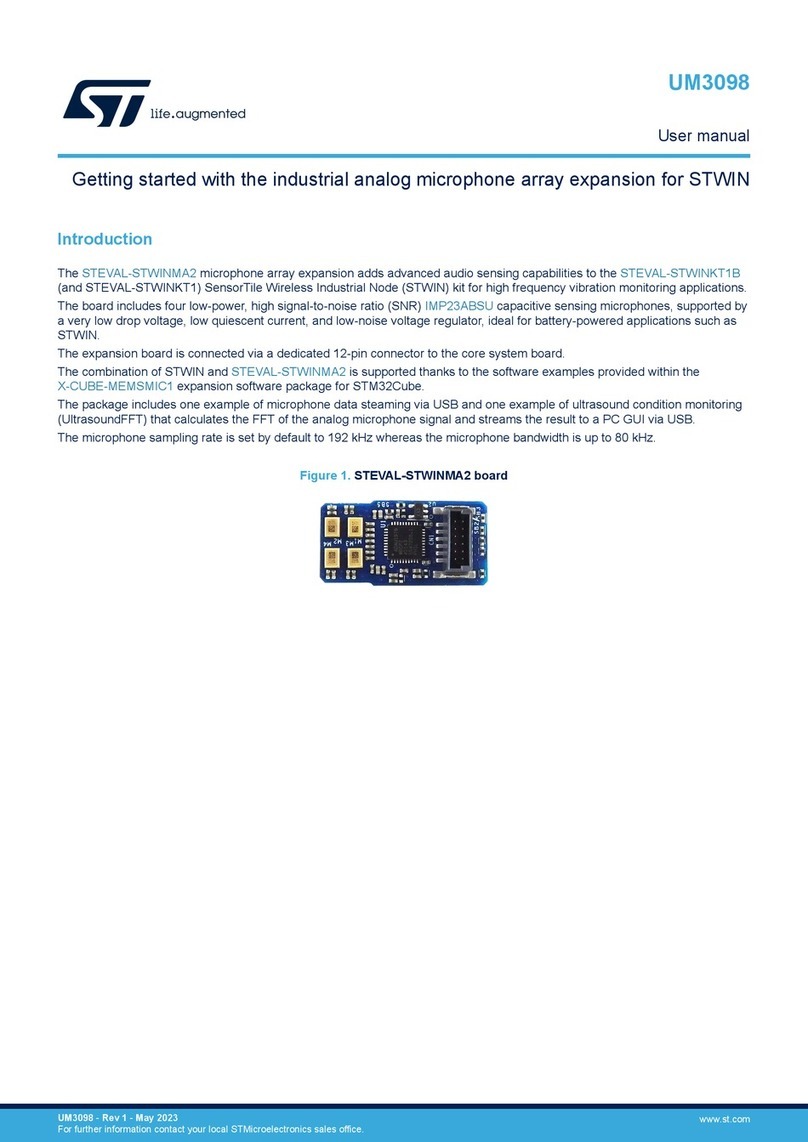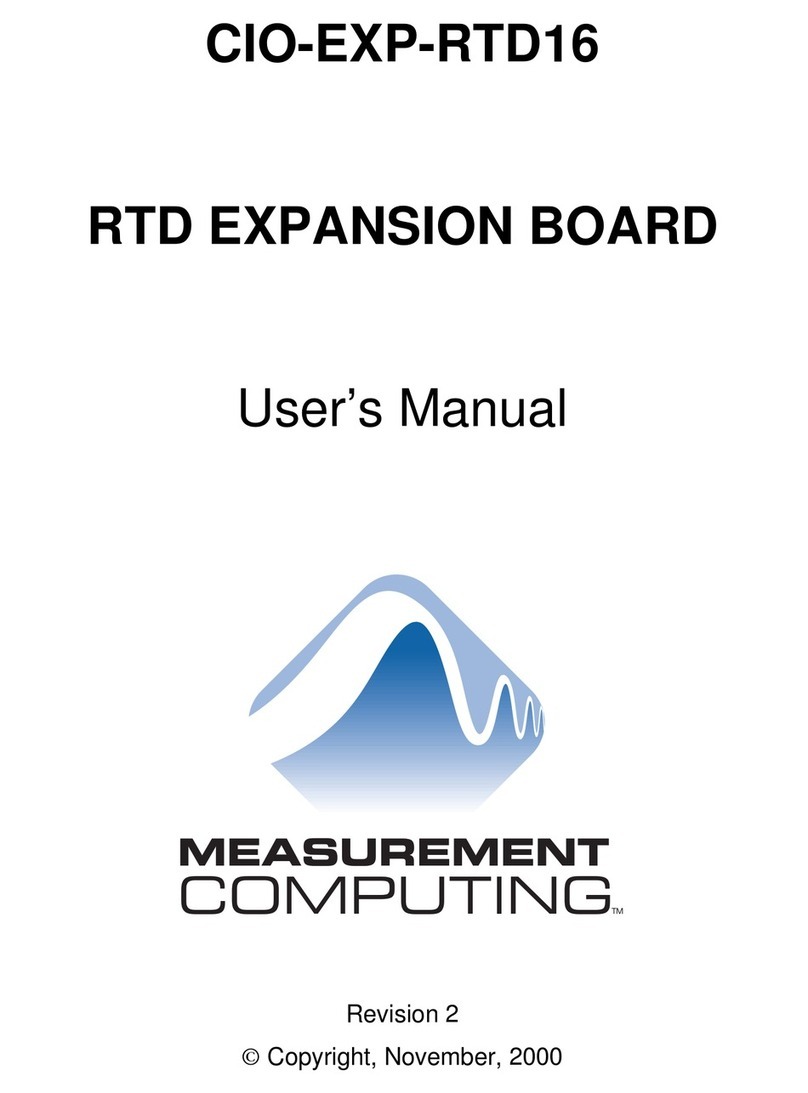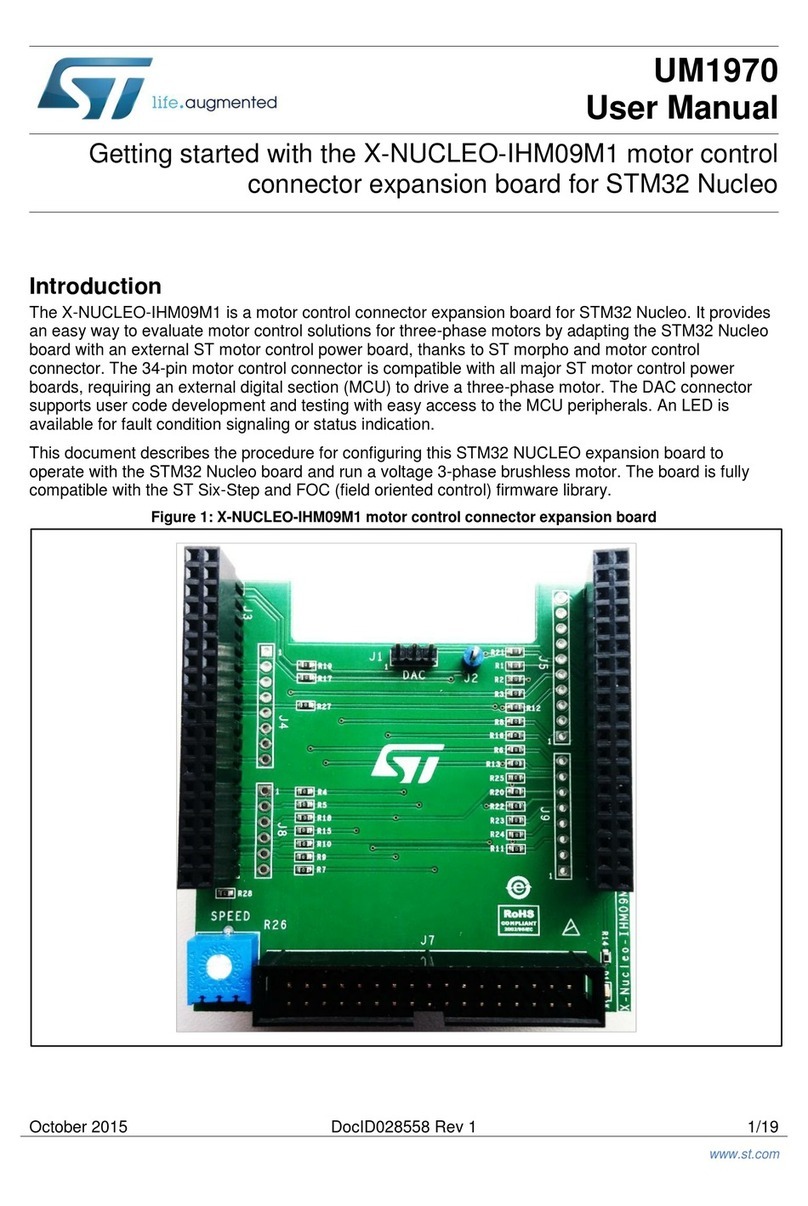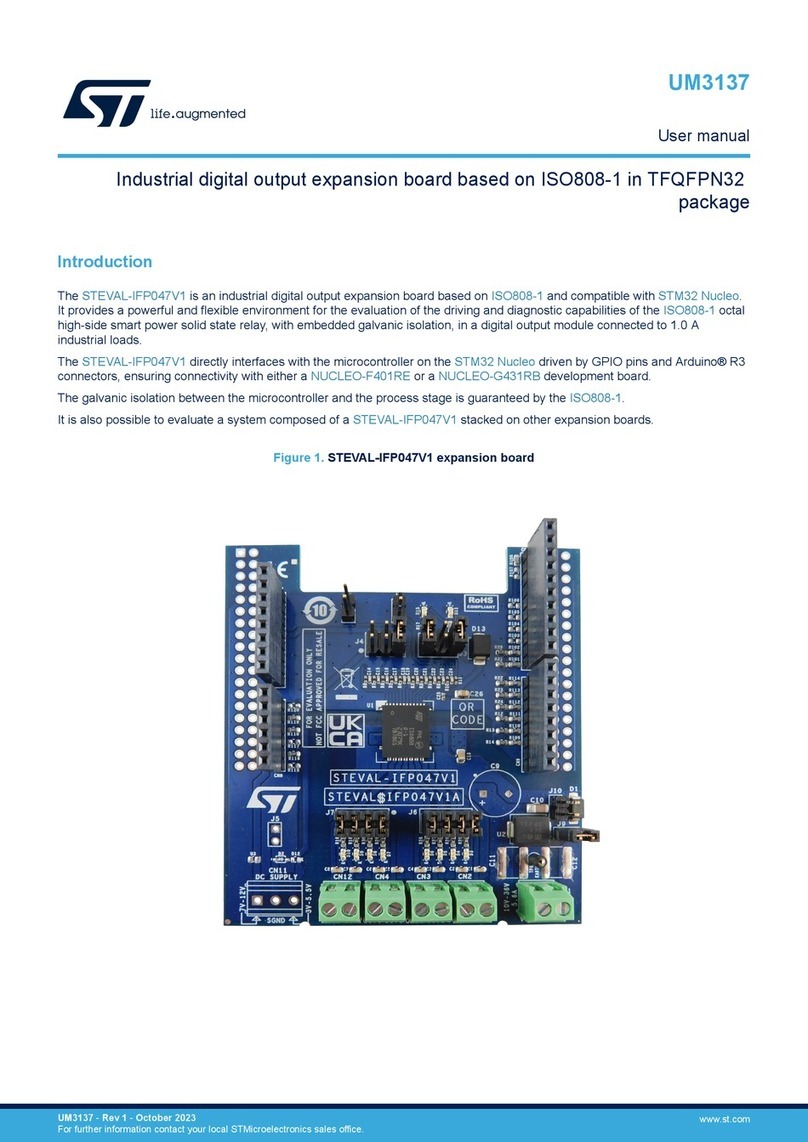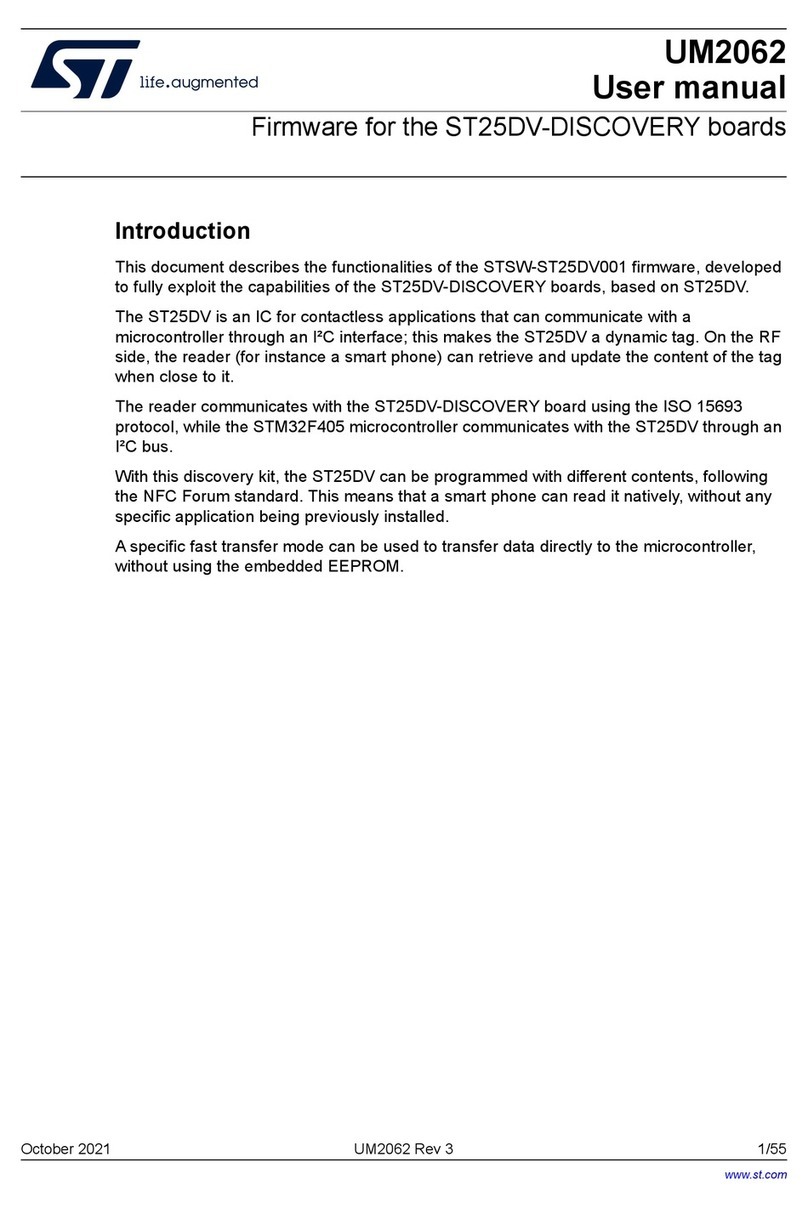
UM2033 Rev 4 3/44
UM2033 Contents
4
5.19 Adapter board from on-board DSI to external DSI
(optional accessory display) . . . . . . . . . . . . . . . . . . . . . . . . . . . . . . . . . . . 23
5.20 Wi-Fi®and extension I2C connector . . . . . . . . . . . . . . . . . . . . . . . . . . . . 24
5.20.1 Serial Wi-Fi®module . . . . . . . . . . . . . . . . . . . . . . . . . . . . . . . . . . . . . . . 24
5.20.2 Extension I2C board . . . . . . . . . . . . . . . . . . . . . . . . . . . . . . . . . . . . . . . . 24
6 Connectors . . . . . . . . . . . . . . . . . . . . . . . . . . . . . . . . . . . . . . . . . . . . . . . 25
6.1 Wi-Fi®and I2C extension connector (CN2) . . . . . . . . . . . . . . . . . . . . . . . 25
6.2 ARDUINO®Uno V3 connectors (CN11, CN14, CN13, and CN9) . . . . . . 26
6.3 USB OTG HS Micro-AB connector (CN15) . . . . . . . . . . . . . . . . . . . . . . . 27
6.4 Ethernet RJ45 connector (CN10) . . . . . . . . . . . . . . . . . . . . . . . . . . . . . . . 27
6.5 LCD MIPI DSI connector (CN1) . . . . . . . . . . . . . . . . . . . . . . . . . . . . . . . . 28
6.6 microSD™ connector (CN5) . . . . . . . . . . . . . . . . . . . . . . . . . . . . . . . . . . . 29
6.7 ST-LINK/V2-1 USB Micro-B connector (CN16) . . . . . . . . . . . . . . . . . . . . 29
6.8 Audio stereo speaker (JP2 and JP3) . . . . . . . . . . . . . . . . . . . . . . . . . . . . 30
6.9 Audio line output jack (CN7) . . . . . . . . . . . . . . . . . . . . . . . . . . . . . . . . . . . 30
6.10 Audio line input jack (CN6) . . . . . . . . . . . . . . . . . . . . . . . . . . . . . . . . . . . . 30
6.11 SPDIF input RCA connector (CN12) . . . . . . . . . . . . . . . . . . . . . . . . . . . . 30
6.12 SPDIF output RCA connector (CN8) . . . . . . . . . . . . . . . . . . . . . . . . . . . . 31
7 32F769IDISCOVERY I/O assignment . . . . . . . . . . . . . . . . . . . . . . . . . . . 32
8 32F769IDISCOVERY board information . . . . . . . . . . . . . . . . . . . . . . . . 39
8.1 Product marking . . . . . . . . . . . . . . . . . . . . . . . . . . . . . . . . . . . . . . . . . . . . 39
8.2 32F769IDISCOVERY product history . . . . . . . . . . . . . . . . . . . . . . . . . . . 39
8.2.1 Product identification 32F769I-DISCO/ . . . . . . . . . . . . . . . . . . . . . . . . . 39
8.2.2 Product identification DK32F769I$AU1 . . . . . . . . . . . . . . . . . . . . . . . . . 39
8.2.3 Product identification DK32F769I$AU2 . . . . . . . . . . . . . . . . . . . . . . . . . 40
8.3 Board revision history . . . . . . . . . . . . . . . . . . . . . . . . . . . . . . . . . . . . . . . . 40
8.3.1 Board MB1225 revision A-01 . . . . . . . . . . . . . . . . . . . . . . . . . . . . . . . . . 40
8.3.2 Board MB1225 revision B-01 . . . . . . . . . . . . . . . . . . . . . . . . . . . . . . . . . 40
8.3.3 Board MB1225 revision B-03 . . . . . . . . . . . . . . . . . . . . . . . . . . . . . . . . . 40
8.3.4 Board MB1225 revision C-01 . . . . . . . . . . . . . . . . . . . . . . . . . . . . . . . . . 40
8.3.5 Board MB1166 revision A-03 . . . . . . . . . . . . . . . . . . . . . . . . . . . . . . . . . 40
8.3.6 Board MB1166 revision A-09 . . . . . . . . . . . . . . . . . . . . . . . . . . . . . . . . . 41
8.4 Board known limitations . . . . . . . . . . . . . . . . . . . . . . . . . . . . . . . . . . . . . . 41
